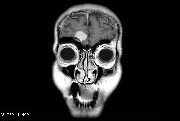Learning Objectives
- This condition results in transient loss of vision in one eye
- This indicates and urgent need for evaluation of the carotid vascular flow
- Other causes may be evaluated by an eye exam or testing of the serum ESR
History
A 71 year old retired kindergarten teacher visits you in the office to talk about some eye symptoms she has had. For the past 1-2 weeks, she had trouble seeing out of her left eye. The symptoms reminded her of a greying haze over her eye, lasting for several minutes, and then abating. There was no headache at the time of the symptom. She denies headaches or joint problems. She has had no difficulty or pain with chewing.
She has no history of allergies. Her medications are lisinopril, aspirin, simvastatin, omeprazole, and tolterodine.
She has a past medical history of hypertension, elevated serum cholesterol, gastroesophageal reflux disease, urinary incontinence, hysterectomy and tonsillectomy.
She has never smoked. She has 2 glasses of wine per week. She lives alone, and she is a widow.
Her daughter has a past medical history of systemic lupus erythematosis. Her mother passed away after suffering from Alzheimers disease at age 89 and her father had a history of non Hodgkins lymphoma.
She has recently had no fevers, coughing or chest pain. Her weight has been stable and her appetite has been normal. Her mood has been well and she has no complaints about her memory function. Her bowel function has been good. She has the urge to urinate every hour, this is improved with the medicine tolterodine. She has had no bruising, bleeding, ear aches or trouble swallowing. Her vision is now normal. She has no rashes or joint complaints.
Examination
Her pulse is 82, her blood pressure is 131/83, her temperature is 98.2 F. She is an appropriately dressed lady without distress. Her heart sounds are normal, there are no murmurs, and her pulse is regular. Her carotid auscultation sounds normal on both sides. Pupillary response to direct and indirect light is normal. Visual fields are normal. Visual acuity is normal when she wears her eyeglasses. Eye movements are normal and conjugate in the horizontal and vertical directions. Facial sensation is normal. Hearing is normal. Facial expression is normal. Palate elevation is normal. Shoulder shrug is normal. Tongue movement is normal. She has normal strength and muscle tone. Sensation is normal to light touch on both sides. Reflexes are normal in the biceps and the quadriceps, but they are absent in the Achilles tendons on both sides. Toes are downgoing to plantar stimulation. Finger nose finger movements are normal. Her casual gait is normal. She has a normal Romberg response.
Localization and Neuroanatomy
In this case, the patient has an episodic visual disturbance affecting the left eye. The symptoms last for minutes. As in the case of optic neuritis discussed earlier, loss of vision in one eye can occur due to inflammation, altered blood flow, or changes in the retina. Sometimes patients cannot distinguish symptoms in one eye or both eyes unless one of the eyes is covered. Symptoms in both eyes may be due to alteration of the visual pathways within the brain.
Diagnosis
A normal examination of the retina helps exclude retinal disease. An intraocular pressure measurement helps to evaluate for glaucoma. Since the patient has no symptoms at the time of exam, there may not be any evidence for a cause on exam. The symptoms are potentially severe though, and further testing is warranted. This case is concerning for cerebrovascular disease, which may predispose the patient to a stroke. It is urgent for the patient to undergo noninvasive vascular evaluation, either by ultrasound of the carotid arteries, CT angiogram, or MR angiogram testing. If this is entirely normal, changes within the optic nerve, due to illnesses like MS or temporal arteritis, might be considered as the cause of the symptoms. The former has been discussed, and would not be high on the list of possible causes for a 71 year old. The latter is likely to be associated with an elevated serum sedimentation rate (ESR), or similar testing showing inflammation (CRP and CBC). Temporal arteritis also tends to be associated with headaches, nonspecific joint pains in the body, temporalis muscle tenderness on exam, or claudication of the masseter and temporalis muscles with chewing.
Treatment
If the patient is shown to have significant narrowing of the carotid artery flow on the symptomatic side, she would be a candidate for carotid enderarterectomy (CEA). Narrowing of 70% or more is a guideline used by most clinicians to determine if there is a benefit to surgery. The risk of complications during surgery is felt to be less than the risk of stroke without it. Medical therapy can also be helpful. Treatment of blood pressure and cholesterol helps to prevent stroke, but if the artery is sufficiently diseased, medical treatment alone is not preferred. Interestingly, narrowing in one artery does not always correlate with narrowing on the contralateral side.
Sometimes patients have visual symptoms unrelated to their eye, the optic nerve, or the optic pathway. Patients with migraine headaches may have visual symptoms, for example. These tend to be symptoms that interfere with their vision, such as sparkles, stars, lights, or patterns. The symptom of amaurosis fugax is a transient loss of vision, not a sensation of additional positive visual phenomena, and it is usually painless.
Review Questions
- The symptom of amaurosis fugax concerns diminished blood supply to which of these organs?
a. the brain
b. the eye
c. the heart
d. the spinal cord
e. the kidneys - Amaurosis fugax should be evaluated by
a. MRI of the brain
b. vascular imaging
c. neck CT
d. MRI of the neck
e. echocardiogram - When amaurosis fugax is diagnosed, treatment will likely be:
a. minimization of cardiovascular risk factors
b. blood pressure support
c. vascular surgery or stenting
d. ophthalmological surgery
e. both A and C
